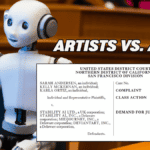I refuse to buy my daughters Bratz dolls. It’s not so much that I don’t want to encourage them to wear makeup or become streetwalkers. It’s more that I don’t want to give rival toy companies Mattel and MGA Entertainment an incentive to spend even more money fighting about the fate of these “girls with a passion for fashion.”
By most accounts, each side has spent well over $100 million dollars so far in legal fees arguing about whether Mattel is entitled to share in the success of MGA’s Bratz dolls, which were allegedly created by MGA designer Carter Bryant while he was still employed by Mattel. (Just to demonstrate how incredible this is, imagine you were a mid-level associate billing out at $350 per hour, working on the case for 10 hours a day, 363 days a year — we’ll give you Christmas and your birthday off. At this frenetic pace of 3,630 hours per year, it would take you over 75 years to bill $100 million in fees. Only have five years? Just enlist the help of 15 colleagues working the same grueling schedule the entire time.)
At first, this may have seemed like money well-spent for Mattel, whose victory at trial in 2008 resulted in an award of $100 million in damages and a sweeping injunction preventing its biggest competitor from producing or selling virtually every Bratz doll on the market. But the bargain quickly soured for Mattel. First, its awards were promptly stayed pending MGA’s appeal. And late last month, those awards were vacated entirely as the Ninth Circuit’s Chief Judge Alex Kozinski gutted virtually every aspect of the trial court’s ruling.
Let’s survey the carnage:
First, Mattel successfully argued to the trial judge that Bryant’s obligation to assign all of his “inventions” to Mattel was broad enough to cover ideas, which would include Bratz. The Ninth Circuit held that while the agreement could be interpreted this broadly, this was not necessarily true, and the trial judge should have considered extrinsic evidence of the parties’ intent.
Second, the Court vacated the judge’s imposition of a constructive trust over the Bratz trademark portfolio. Even assuming that Bryant’s employment agreement assigned his ideas to Mattel, and that MGA misappropriated the “Bratz” name, the value of the Bratz-related trademarks increased significantly as a result of later efforts by MGA in which Mattel had no involvement.
Third, the Court held that there was a question as to whether the Bratz drawings and preliminary “sculpt” designed by Bryant were created outside the scope of his Mattel employment. The jury should have been asked to consider whether Bryant’s creations were made during work hours or on his own time.
Finally, the Court found that the trial judge’s copyright infringement analysis was flawed, in that he appeared to hold MGA liable for infringement based solely on the similarity of ideas or other elements not protected by copyright law.
Because several of the trial court’s errors appeared in the jury instructions, Judge Kozinski noted that it is likely that a significant portion — if not all — of the jury’s verdict and damages award would need to be vacated and “the entire case will probably need to be retried.”
Oh, is that all?
So in light of the Ninth Circuit’s decision, what does $100 million in legal fees get you these days?
If you’re MGA, you get a front-row seat watching your company shrivel to a shadow of its former self as you are forced to lay off scores of employees to keep up with your mounting legal bills.
If you’re Mattel, you get years of litigation, a few fleeting seconds of sweet victory, two more years of litigation, no relief whatsoever, and an indeterminate number of years of further litigation and untold millions of dollars in legal fees to come.
In his typically-pithy fashion, Judge Kozinski closed out his “Bratz” opinion by pronouncing that “America thrives on competition. Barbie, the all-American girl, will too.”
Perhaps. But only if the legal fees don’t kill her first.






